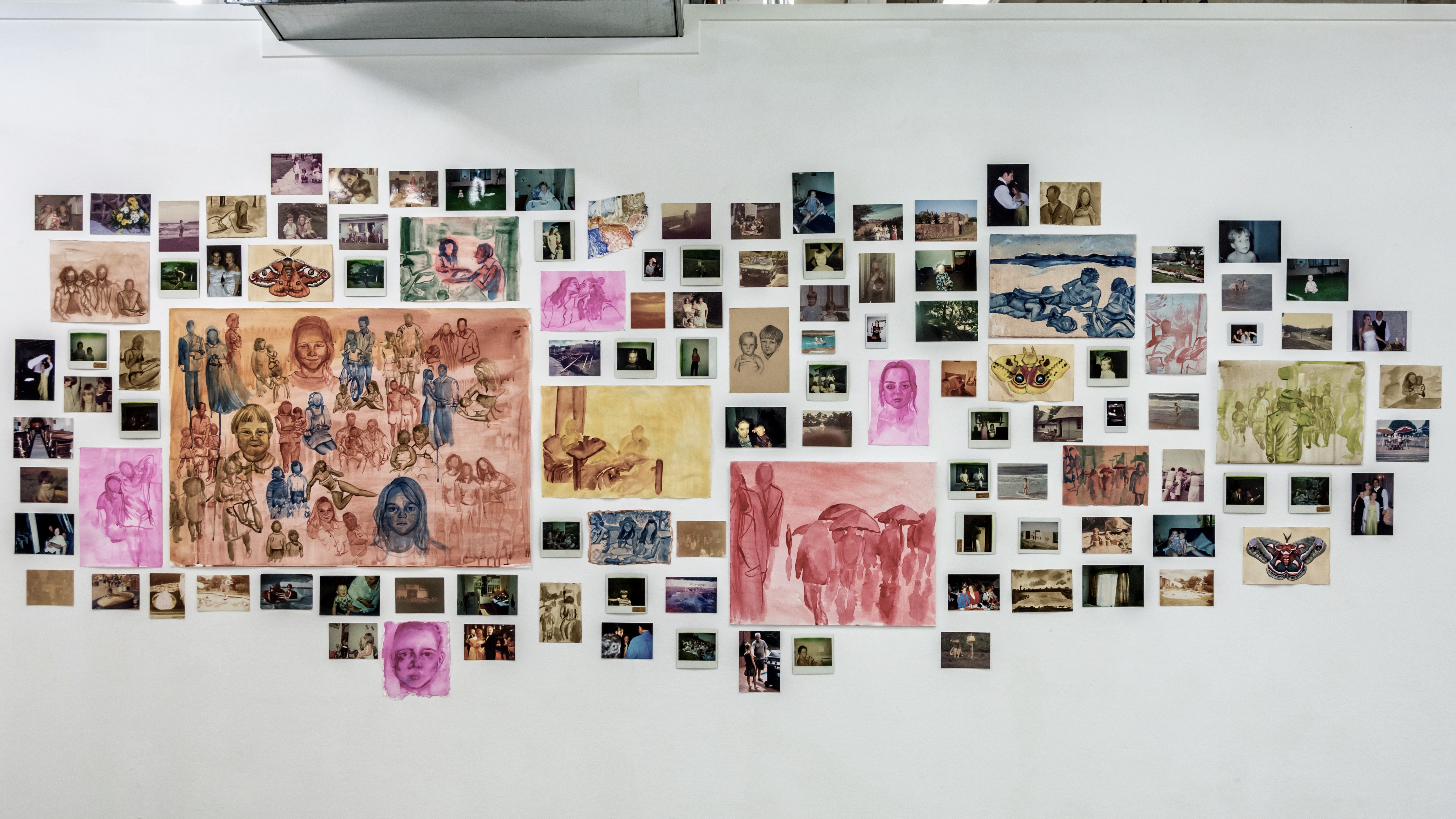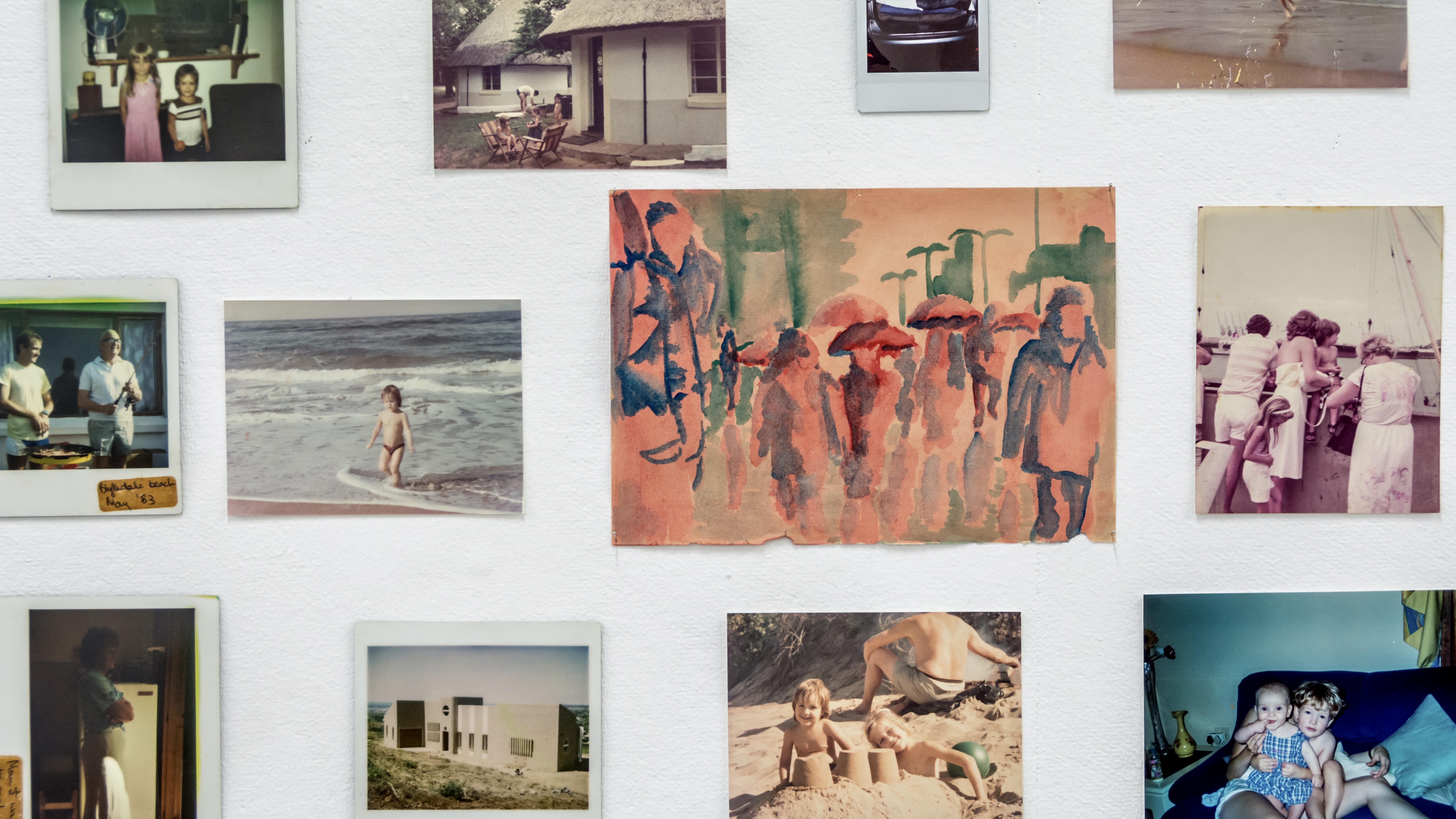
Amy Martin
Bridge Between Worlds
https://amymartinart.wordpress.com/
A discussion around the relationship between familiarity and the unknown.
Images have the power to relate to any viewer. A relationship is built when familiarity is found in scenes that you recognize, you become the bridge between the unknown and what you know. When an image is so vague in its projection, it creates the openness to relate to anyone, even if the image is completely private to the creator. Ones work showing personal scenes of an everyday life seem completely applicable to any stranger’s view, as if we’ve all lived a similar past, been at the same beach, had the same grandparents in that old family photograph.
These works represent the collective connectivity of familiarity in family images, but they aim to create a kind of unity with the viewer, an expression of looking for connections in an isolated place, a glimpse into the personal from a very public perspective.
Being an immigrant means leaving every sort of familiarity behind, entering a world in which you have no past attachments. I have a disconnect to all the history that came before me; in a foreign world with foreign faces and an accent that labels me as foreign. The discomfort of being called out on your cultural difference. I am in constant parallel to my history… I move in sync with my past without ever having lived in it.
I see memories as a constant slide show of short clip and film stills. Life moves passed us in bursts of light, fleeting moments that we look through like windows on a skyscraper. Each pane of glass separates us from a different story that we’ve been a part of, distant, closed off, chapter ending. Our minds focus in on thoughts in neon settings and foggy textures, never exactly the same as before. We stare down at the people crossing the streets, imagining them imagining us, looking up and creating stories for the people in the windows. Each a different scene, a different scenario, all individual lives following a course that is being drawn out at every decision that’s made. So fragile it all seems; one move leads to the next and the next until suddenly our stories are written and the path disappears, and the blinds are closed, and the window is dark.
All that’s left are the distorted memories left in our loved one’s minds, or even a stranger who’s paths we crossed years before, a gentle smile we shared. Images engraved deep into us; a carving on the bark of the tree, browned with age but still there, never fully grown over. We walk past this tree every day, read the initials of those that crossed that forest before us. Two lovers carving the evidence of their eternal passions for all pedestrians to see, as if the memory will fade and the very actions of the love will be rendered obsolete. How is memory so fickle that the details fade so quickly? We cease to remember, to think, to love, to live. Eventually we are all just decomposing autumn leaves rotting underneath the new blooming spring, no longer attached, no longer relevant. All in the past. Gone and forgotten. The grasp that we have slips away, effortlessly.
These works are a representation of the history I was a part of, but never lived through. Memories that do not belong to me and ones that do. These puddles of images that I ponder in, and events that somehow lead to my conception and the life I lead now, they are all relevant, all somehow connected. This installation serves as a remembrance of the past, and the value we have on the present. Patrick Pound expresses beautifully the relationship between images and documents. His recent exhibition The Museum of There, Not There, 25 Apr – 23 May 2020, is of huge inspiration to this installation. Specifically, the way in which he indicated the “gap between presence and absence”[1 The images in Bridge Between Worlds are all deeply personal to my history and my present;, yet there are connections for strangers. A sense of home in a stranger’s house, the space between family and familiarity, presence and absence.
[1] "Patrick Pound, The Museum of There, Not There." Memo Review. Accessed November 3, 2020. https://memoreview.net/blog/patrick-pound-the-museum-of-there-not-there-by-anna-parlane.




